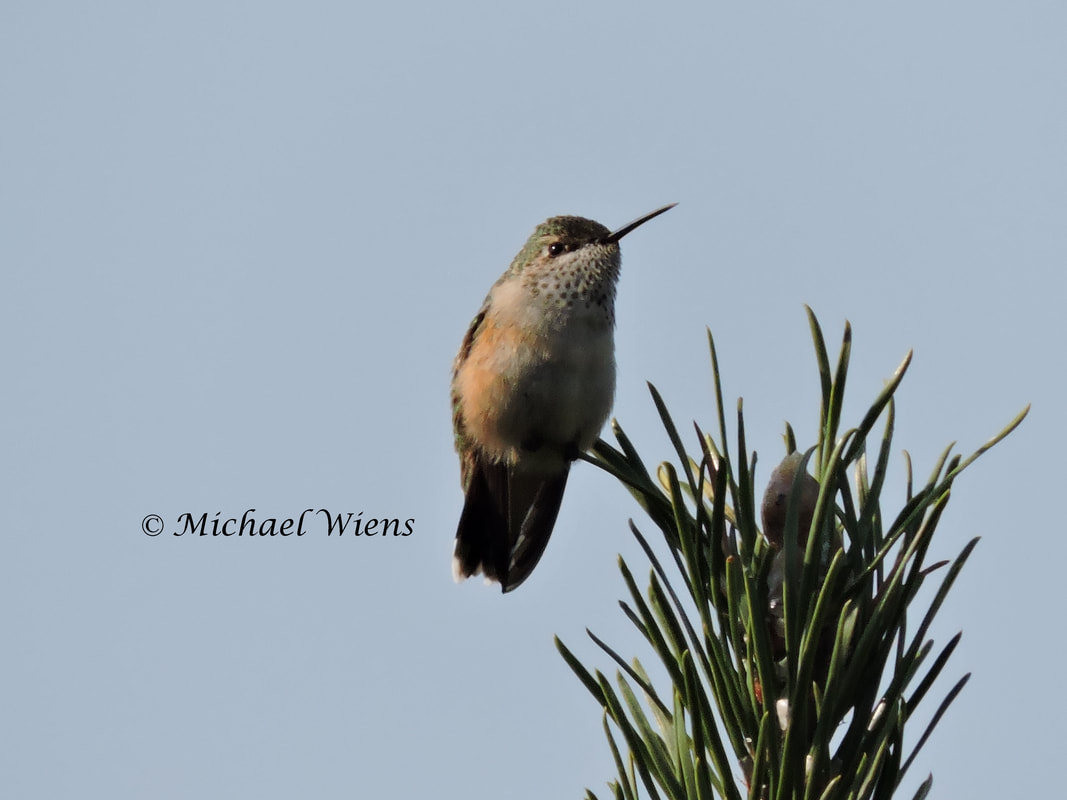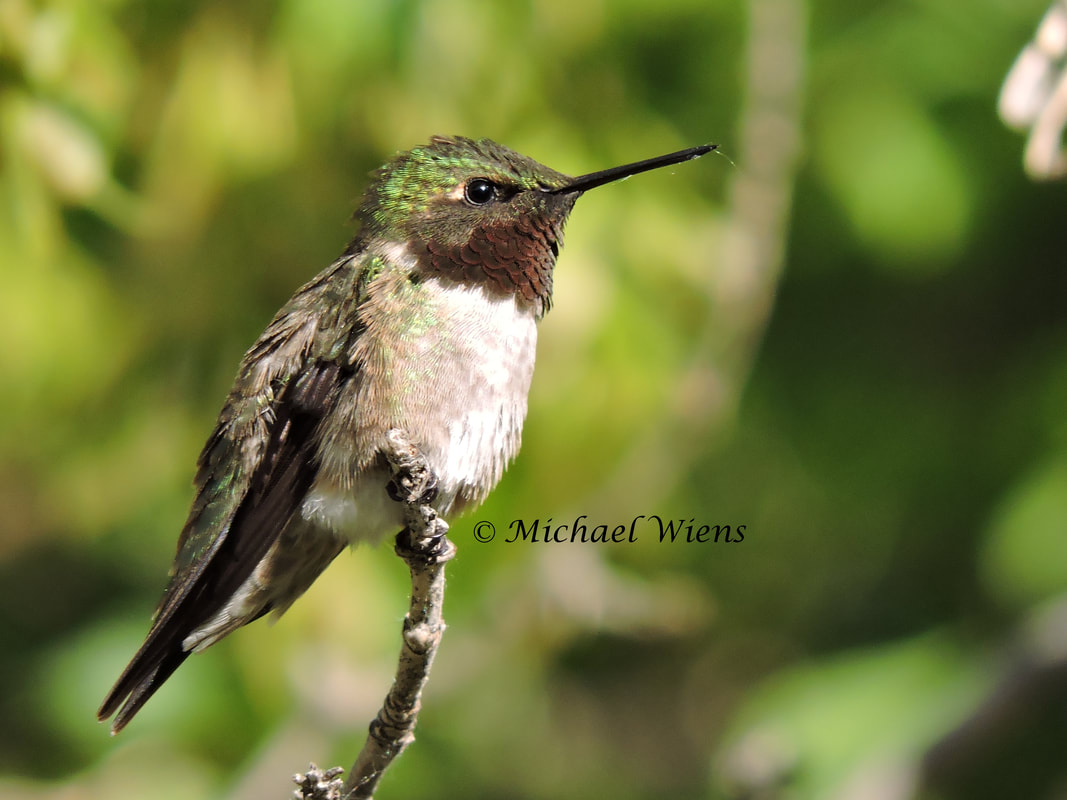Humming Blog |
 Late last fall a rare sighting of a Calliope hummingbird showed up in southern Ontario. It was a first in that region of Canada. As a matter of fact it would be extremely rare to see one beyond the sight of the Alberta mountains. What I found extremely exciting about this is that only weeks prior, I had the first and only Calliope ever visit my place. I'm located a few hundred miles East of the Alberta mountains. I immediately started to question whether it was the same bird that left my place weeks before. When that Calliope visited my place, I nearly didn't recognize it. I only noticed it around our place for about 4 hours. It took full advantage of all of our flowers and feeders, and acted as though this garden belonged to him. When he did leave my yard it was pretty obvious he would not return. He headed up into the sky and directly east. Weeks later Ontario was filled with excitement over this rare sighting. I would never question it being the same bird if it weren't for the fact that it was my first Calliope that far east of the mountains and also a first for Ontario. I also never heard of any other Calliope sightings East of the Rocky mountains. The chances to me seem pretty good that was the same bird. Unfortunately, I have no way to confirm it. I did compare my images to he ones posted, and the resemblance is remarkable. So, was it the same bird? I wish I knew for sure. What I do find incredible is the distance that they fly over such a short period of time. This is evident by their migration. I know that other birders are much like myself, and when we see a rare bird show up in our garden, it just feeds the addiction for future years. Calliope Hummingbird. N.E. of Edmonton, Alberta, Canada. August 2018
0 Comments
 Still months away for myself but only days away for many, ruby throats will soon make an appearance in gardens across the Southern U.S. What will they be looking for, and what will get their attention? For many of us, it's not whether they'll show up, it's just a matter of when. For others that want to get started in "hummingbirding", you may have to go to extraordinary measures to not only attract these little beauties, but to give them incentive to stay. Like most, they are creatures of habit. If undisturbed or unharmed, they typically remain within their daily, weekly, monthly and yearly habits. Also, if there's enough incentive to keep a bird returning, they will. It's truly remarkable how the tiniest of birds are capable of remembering where food sources were a year ago, but it's a fact. Their tiny brain tracks the good and bad of all situations and files the information for future reference. In knowing this, we can provide a structured garden that will not only attract them, but give them an overwhelming number of reasons to stick around or keep returning. Here are a few important things you can do to increase the odds of a hummingbird showing up in your garden, and to keep them returning repeatedly. First and very important, make your feeders and flowers visible from all directions of your home. We have no idea of the direction they're coming, so to increase your odds, provide visibility from all directions. Makes your garden the envy of the neighborhood. If more flowers and feeders surround your home, they'll make note of it. These birds need food to survive, and if they recognize multiple sources within a small territory, they will not resist it. Whether it's a young bird looking for its first territory to occupy or a mature bird passing through to a territory it regularly dominates each summer, they'll stop in and make use of your generous offerings. Don't be disappointed if the bird doesn't return in the near future. Most mature birds find it difficult to break the habits of the previous year. Like I mentioned, they are creatures of habit, and if they had a successful breeding season the previous year, it's unlikely they'll change. In this case you can look forward to that bird returning through your yard during the southern migration. At that point they may even stick around for a few days. Other young birds from the previous summer will be looking for a new territory to call their own. Secondly, have your feeders up early. You've got nothing to lose except 10 cents worth of nectar by having your feeders up before they arrive. Far too many people are waiting for their first sighting before they put up a feeder. The problem with this is that the feeders are what they are primarily attracted to during the northern migration. They provide the most amount of food without having to expend much energy to obtain it. Many people say the hummingbirds show up at their window alerting them to put out the feeder. This is not the case. They are, however, returning to a location where a food source once hung. The reason I can say this is that they have the same reaction when you have an empty hanger at locations all around the yard. They will fly to where a feeder hung, look in all directions, and question where that feeder is. When they know a location very well, they don't necessarily fly to something they see, they fly to a location that once hung a feeder. They've got other senses besides sight in locating past food sources. They are remarkable beyond our understanding. So don't wait on their assumed arrival, be prepared ahead of time. There are sighting pages where you can see the progression of the migration. Follow these and place feeders out 7 - 10 days in advance. Here is one site to follow their movements. www.therubythroat.com. Simplify how these birds would react to color and feeders and you'll understand how they operate. Color within your garden represents food, and food is survival. Provide multiple sources of both feeders and flowers, make them visible, and you will increase the chances of them seeing and then showing up in your garden, and ultimately returning over and again. |
Archives
June 2024
Categories
All
|
 RSS Feed
RSS Feed
